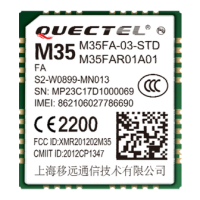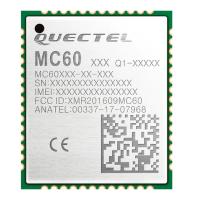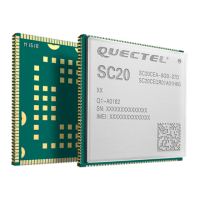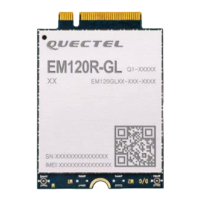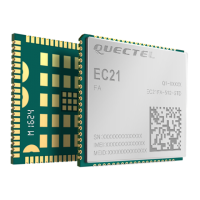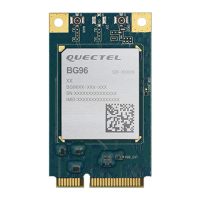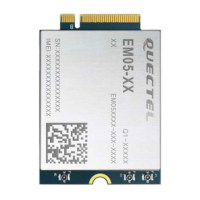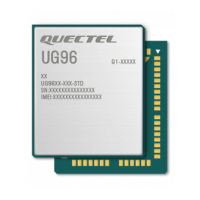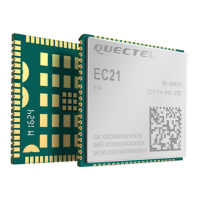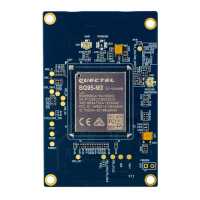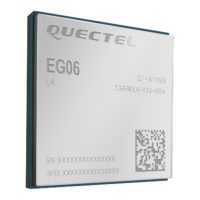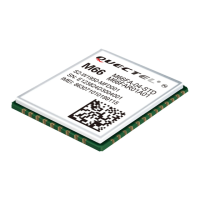
Do you have a question about the Quectel M66 and is the answer not in the manual?
| Category | GSM/GPRS Module |
|---|---|
| Frequency Bands | GSM 850/900/1800/1900 MHz |
| GPRS | Class 12 |
| Operating Temperature | -40°C to +85°C |
| Voice Codec | HR, FR, EFR, AMR |
| GPRS Data Rate | Max 85.6 kbps (DL), Max 42.8 kbps (UL) |
| Interfaces | UART, ADC |
| Protocols | PPP, TCP/IP, UDP, FTP, HTTP |
| SIM Card | 1.8V/3.0V |
| Certifications | CE, GCF, FCC, PTCRB, IC |
| Supply Voltage | 3.3V ~ 4.5V (Typ. 3.8V) |
| Antenna | External Antenna |
Details the specifications and differences between BC68 and M66 modules.
Compares the general properties and features of BC68 and M66 modules.
Illustrates the pin assignments for both BC68 and M66 modules.
Explains the power supply requirements and reference design for BC68 and M66.
Details the circuit and timing for powering on the BC68 and M66 modules.
Describes methods for powering down the BC68 and M66 modules.
Explains the hardware and software methods for resetting the BC68 module.
Describes how to use the NETLIGHT pin for network status indication.
Details the compatible (U)SIM interface design for BC68 and M66.
Discusses the voltage domain differences and reference design for UART interfaces.
Explains the ADC input channels for BC68 and M66 modules.
Covers the RF antenna interface compatibility and reference circuit.
Shows the recommended footprint layout for BC68 and M66 modules.
Details the recommended stencil thickness and design for soldering.
Illustrates the installation sketch map for BC68 and M66 modules on a PCB.
Explains the soldering process, including reflow soldering thermal profile.
Describes the packaging methods, tape dimensions, and reel details for BC68 and M66 modules.
